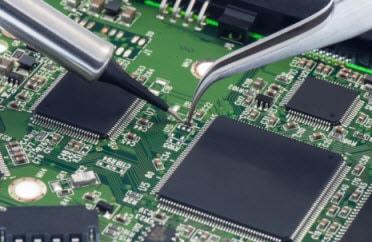Newsletter Sign Up
Subscribe to get the latest news and updates. No span, we promise.



Soldering is one of the most fundamental skills required in electronics. But, before you go ahead with soldering, it is always wise to have proper knowledge about the process. This post will explain everything from the basics of soldering to the process of doing it.
Soldering is a process of joining components permanently to a printed circuit board. An alloy of lead and tin (63% tin and 37% lead), is used to fix a component pin or leg to the copper track of a circuit.
Solder is a low-melting, fusible metal alloy, and is used to create a permanent bond between metal work pieces. Generally, solder can be made from tin and lead, or from silver or brass. Silver and brass solders are used to join less fusible metals at higher temperatures.
What Materials are required for Soldering?
Following materials are required for soldering:
Preparations for Soldering:
Before starting the process of soldering, one should take the following points into account:
How is Soldering Done?
It is very important to follow the steps given below while soldering:
Safety Precautions
You are required to follow some safety precautions while soldering. Here are some of them:
Following the aforementioned steps will help you solder efficiently and safely. Sierra Assembly Technology is into designing Printed Circuit Boards (PCBs) for over 3 decades now, and can help you with your queries related to soldering and designing a PCB.